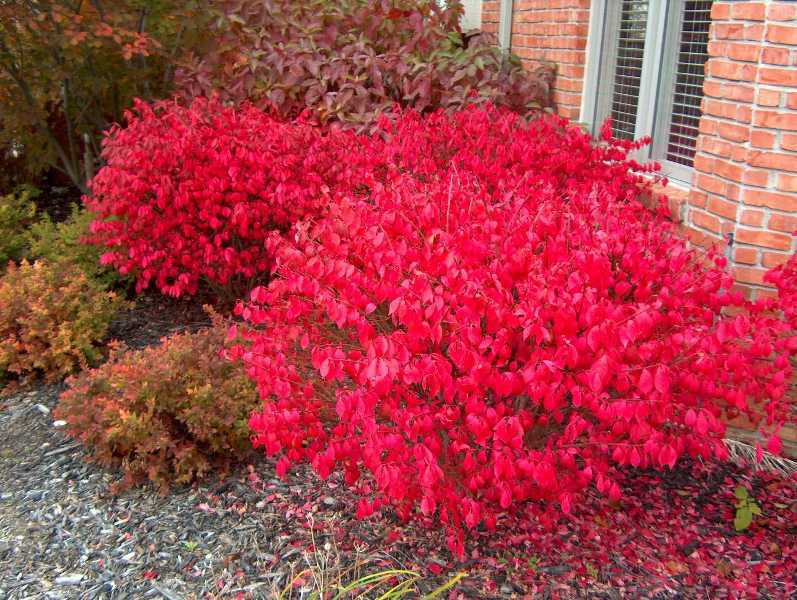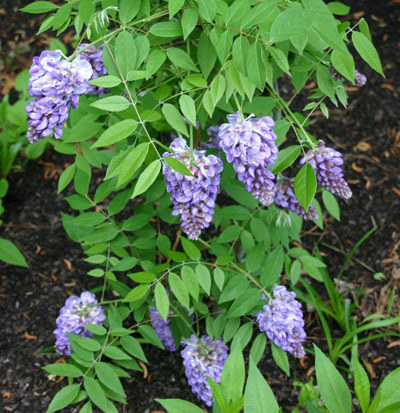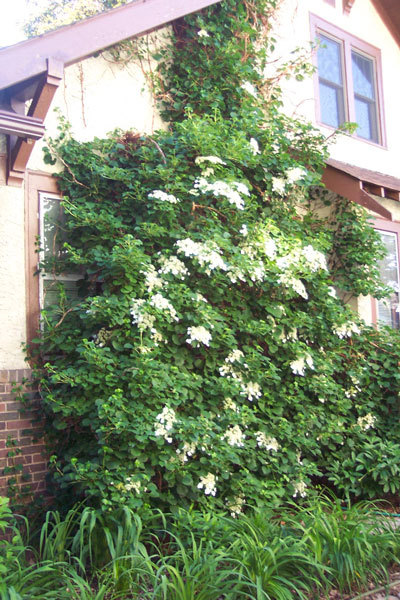Maine has not, as the other New England states have, made invasive plants illegal.
A proposal to do so was written in 2008, Jeff O’Donal told a group of landscape and nursery professionals in a program at his Gorham nursery last week. But as the state ran into financial problems, the proposal was left by the wayside.
O’Donal thinks the legislation will come eventually, and he wants the ornamental horticulture industry to help shape the legislation so the industry can live with it.
He’s most concerned about cultivars — hybrids or mutations of a plant that is invasive but might not be invasive itself. In New Hampshire, he said, the law states that if a species is deemed invasive, and is thus illegal to sell, all cultivars of that species would be illegal unless they are proved not to be invasive.
“It takes 10 years of trials to prove something is not invasive,” O’Donal said, “so the industry loses that plant for 10 years.”
Therefore, rather than face such restrictive legislation, O’Donal advised all plant dealers in the state to take plants deemed invasive off the market voluntarily. To help do that, he developed a list of plants that are invasive in Maine, are probably invasive in Maine or have the potential to be invasive in Maine.
And then he came up with a group of alternative plants.
The invasive plants he put on his list are Norway maple (Acer platanoides), Japanese barberry (Berberis thunbergii), Oriental bittersweet (Celastrus orbiculatus), autumn olive (Eleaegnus umbellata), burning bush (Euonymus alata), honeysuckle (Lonicera tartarica) and glossy buckthorn (Rhamnus frangula).
There are other plants that are potentially invasive, but these are the plants that most affect the nursery industry.
Burning bush is the plant O’Donal cares most about. First, although burning bush is a problem in wild areas of Connecticut, it has shown up in the wild only in the warmest coastal areas of Maine. And the dwarf burning bush has trouble surviving in most of Maine, so it probably is not going to be invasive.
But O’Donal does not sell either of those plants, because with climate change, Maine’s climate will probably be like Connecticut’s within a few decades.
However, Euonymous alatus “Rudy Haag” is a dwarf burning bush that has been grown in Kansas and Nebraska for 50 years and has never produced seeds. It grows 6 feet tall and about 12 feet wide, has the bright-red color of traditional burning bush, and seems to grow without any chance of being invasive.
“If a seedless watermelon is seedless, then this plant is seedless,” O’Donal said. “This is one plant that I am going to fight for.”
When O’Donal ordered “Rudy Haag” plants in the past, he sometimes received the traditional dwarf burning bush, so he is now growing his plants from cuttings in his own fields.
The other burning bush alternatives O’Donal noted were highbush blueberries, Enkianthus campanulatus, “W. Stackman Golden Shadows” dogwood and fothergilla, all of which provide red to orange foliage in the fall and have many other advantages (i.e., edible berries or lovely blossoms) that burning bush does not.
A slightly different alternative, he said, would be a variegated red-twig dogwood, such as “Ivory Halo” or “Arctic Fire.” They have more interesting foliage than burning bush during the growing seasons and provide the red in the fall with twigs instead of leaves.
The Norway maple is a major problem, O’Donal said, because it grows fast and has a lot of large leaves that come out early in the spring and stay late in the fall, so there is lots of shade under the tree that kills any plants trying to grow there. It also has large, sticky seeds, so it spreads seedlings quickly.
O’Donal thinks Crimson King, a red-leafed cultivar of the Norway maple, is not invasive. He said Crimson King will produce seedlings, but that they are of another, less hardy red-leafed cultivar that will not survive in Maine.
Alternatives for Norway maple include a variety of red maples, sugar maples and even a horse chestnut and a sweet birch, which have similar shapes to the Norway maple.
Barberries have been invasive in Maine — so much so that in some places in York County, you need leather chaps so your legs won’t get scratched raw by the thorns. Alternatives include a variety of spireas, weigelas and a dwarf physocarpus called “Little Devil.”
There is no question that Oriental bittersweet is invasive, and when you order American bittersweet, O’Donal said, you often end up getting Oriental. Alternatives include several climbing hydrangeas and American wisteria, including “Nivea” and “Amethyst Falls.” Both alternatives take a while to produce blooms, but they are well worth the wait.
For autumn olive, many of the viburnums serve as alternatives — again with beautiful blooms as an addition. For honeysuckles, the alternatives are winterberry and physocarpus. And for buckthorn, the alternatives are elderberry, serviceberry and viburnum.
Keep this information in mind as you think about your garden this winter and early spring. It may be time to pull out or cut down a potentially invasive plant in your garden and replace it with a superior plant.
Tom Atwell can be contacted at 791-6362 or at
tatwell@pressherald.com
Send questions/comments to the editors.





Success. Please wait for the page to reload. If the page does not reload within 5 seconds, please refresh the page.
Enter your email and password to access comments.
Hi, to comment on stories you must . This profile is in addition to your subscription and website login.
Already have a commenting profile? .
Invalid username/password.
Please check your email to confirm and complete your registration.
Only subscribers are eligible to post comments. Please subscribe or login first for digital access. Here’s why.
Use the form below to reset your password. When you've submitted your account email, we will send an email with a reset code.